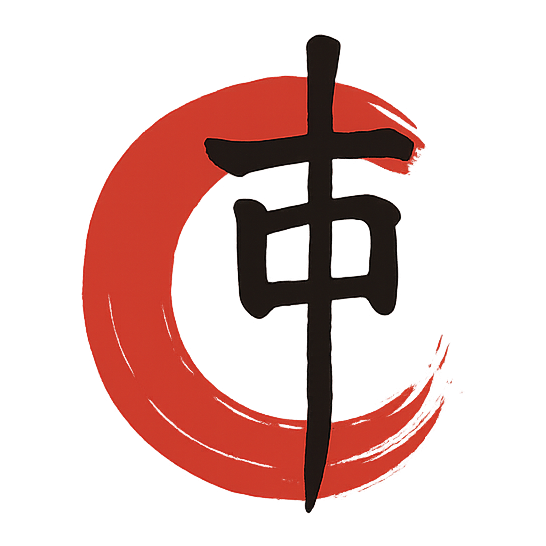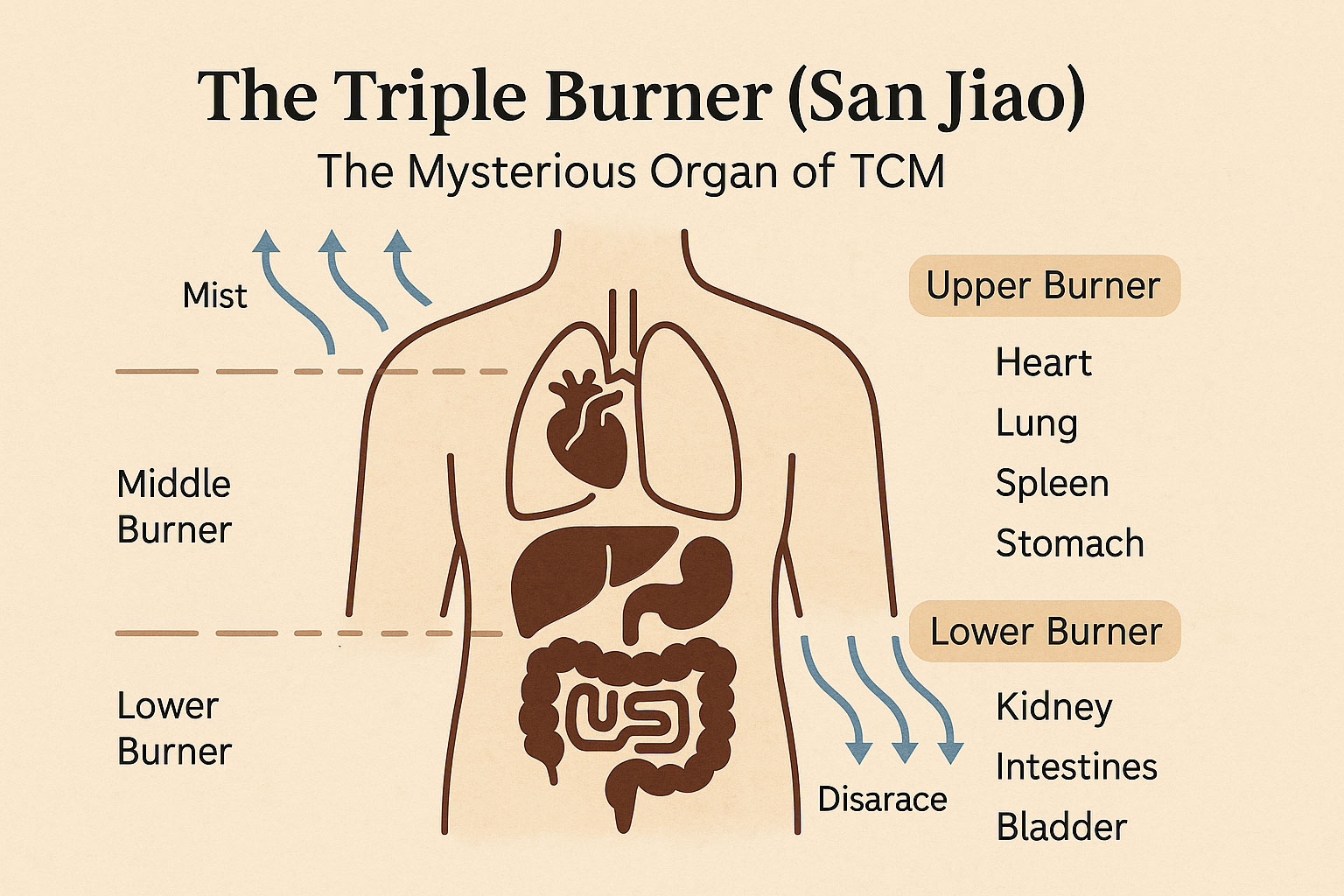Among the internal organs of Traditional Chinese Medicine (TCM), none is as enigmatic as the Triple Burner (San Jiao, 三焦). Described in the Huangdi Neijing as an “organ without form”, San Jiao has no direct anatomical equivalent in Western medicine, yet it plays a vital role in maintaining harmony between all bodily systems.
This article will explore the concept, structure, and clinical significance of San Jiao — a key to understanding how Qi and fluids circulate throughout the body.
🔶 What Is San Jiao?
San Jiao literally means “Three Burners” or “Three Warmers”. It is not a single organ but a functional system divided into three parts:
| Burner | Location | Functions |
|---|---|---|
| Upper Burner (Shang Jiao) | Above diaphragm: Heart & Lung | Disperses Qi, regulates respiration, distributes fluids as mist |
| Middle Burner (Zhong Jiao) | Between diaphragm and navel: Spleen & Stomach | Digests food, transforms and transports Qi and nutrients |
| Lower Burner (Xia Jiao) | Below navel: Liver, Kidneys, Intestines, Bladder | Separates clear from turbid, excretes waste, governs reproduction |
In TCM, San Jiao is seen as a conduit for Yuan Qi (Original Qi) and the network that governs water pathways, often described metaphorically as:
“The San Jiao is the official in charge of irrigation.”
🔶 Core Functions of San Jiao
1. Controls the Transportation of Qi
- Acts as a passageway for Yuan Qi, distributed from the Kidneys to all organs
- Assists in connecting upper, middle, and lower regions of the body
2. Regulates Water Metabolism
- Works with Lung, Spleen, and Kidney to ensure fluid movement and excretion
- Disruption can lead to Dampness, Edema, Phlegm
3. Harmonizes the Zang-Fu Organs
- Serves as a coordinator between different organ systems
- Ensures smooth Qi transformation and communication
4. Disperses Heat and Maintains Internal Temperature
- Especially important in febrile diseases and Heat syndromes
- Each Jiao can express different stages of Heat in epidemics or inflammation
🔶 San Jiao in Diagnosis and Treatment
San Jiao appears frequently in pattern differentiation:
| Condition | San Jiao Relevance |
|---|---|
| Fever with thirst, cough | Heat in Upper Burner |
| Bloating, poor appetite | Dampness or Heat in Middle Burner |
| Dark urine, constipation, lower abdominal pain | Damp-Heat in Lower Burner |
📌 Example: In Warm Disease (Wen Bing) theory, the progression of pathogens is tracked through the San Jiao — from superficial to deep levels of the body.
🔶 Herbal and Acupuncture Applications
- Herbs that regulate San Jiao Qi: Zhi Shi (Unripe Bitter Orange), Hou Po (Magnolia Bark), Ban Xia
- Herbs that clear San Jiao Damp-Heat: Huang Qin (Upper), Huang Lian (Middle), Huang Bai (Lower)
- Acupuncture points:
- SJ5 (Waiguan) – Harmonizes San Jiao, clears Heat
- CV12 (Zhongwan) – Middle Burner regulator
- ST25 + ST36 + SP9 – Often used to clear Dampness across Jiao levels
🔶 San Jiao and Modern Interpretations
Although it lacks a physical form, San Jiao is increasingly viewed as a regulatory network similar to:
- Lymphatic system
- Neuroendocrine-immune axis
- Fascial planes and connective tissue
- Fluid and temperature regulation
This aligns with its ancient description as a metabolic integrator and Qi-fluid transporter.
🔶 Conclusion
The San Jiao remains one of TCM’s most profound and mysterious concepts — invisible in structure but indispensable in function. By understanding this energetic pathway, practitioners gain a deeper ability to diagnose complex patterns, treat systemic imbalance, and guide the body toward internal harmony.
Though elusive, the Triple Burner is a testament to TCM’s brilliance in seeing beyond structure, into function and flow.


发表回复